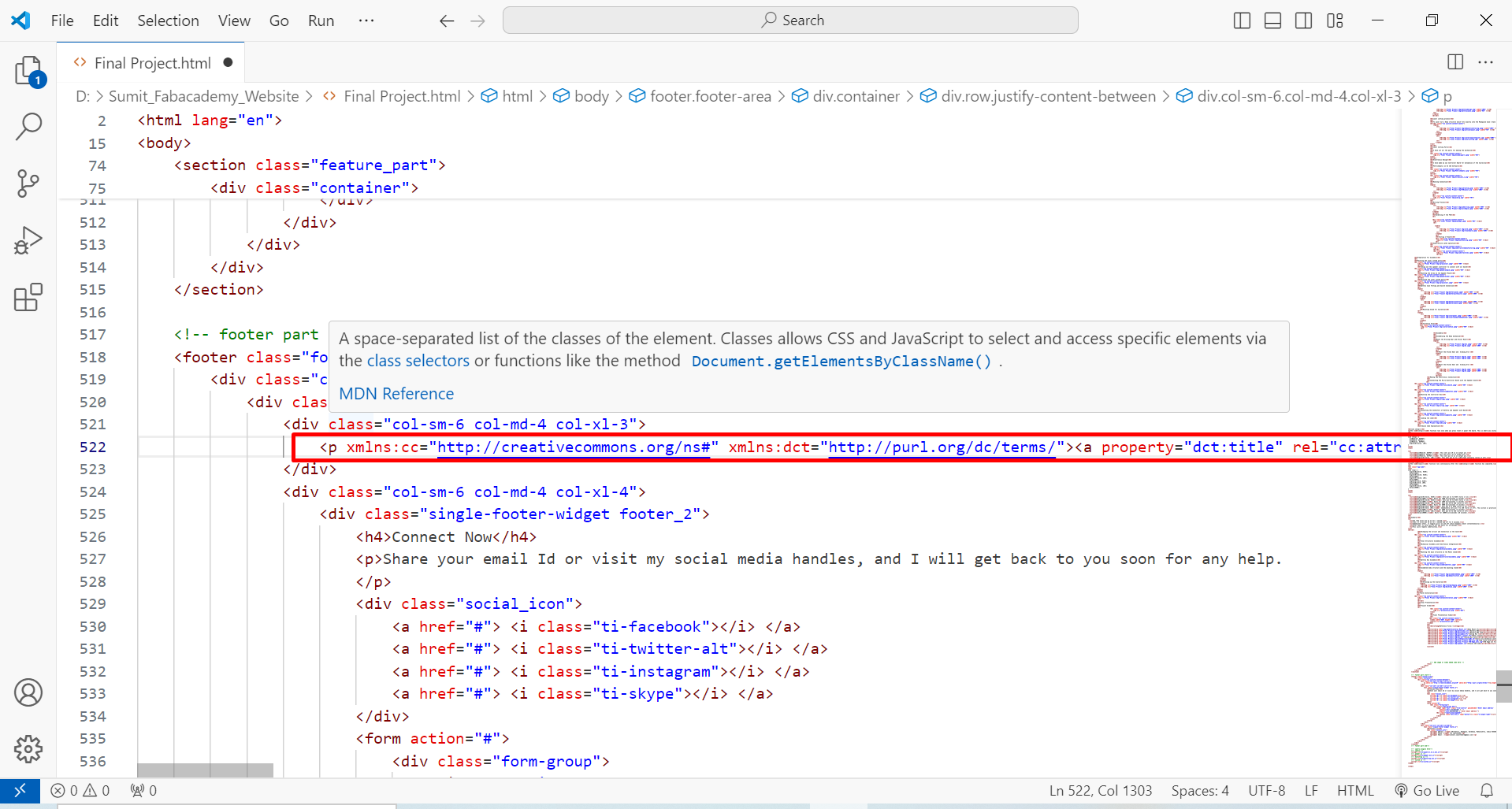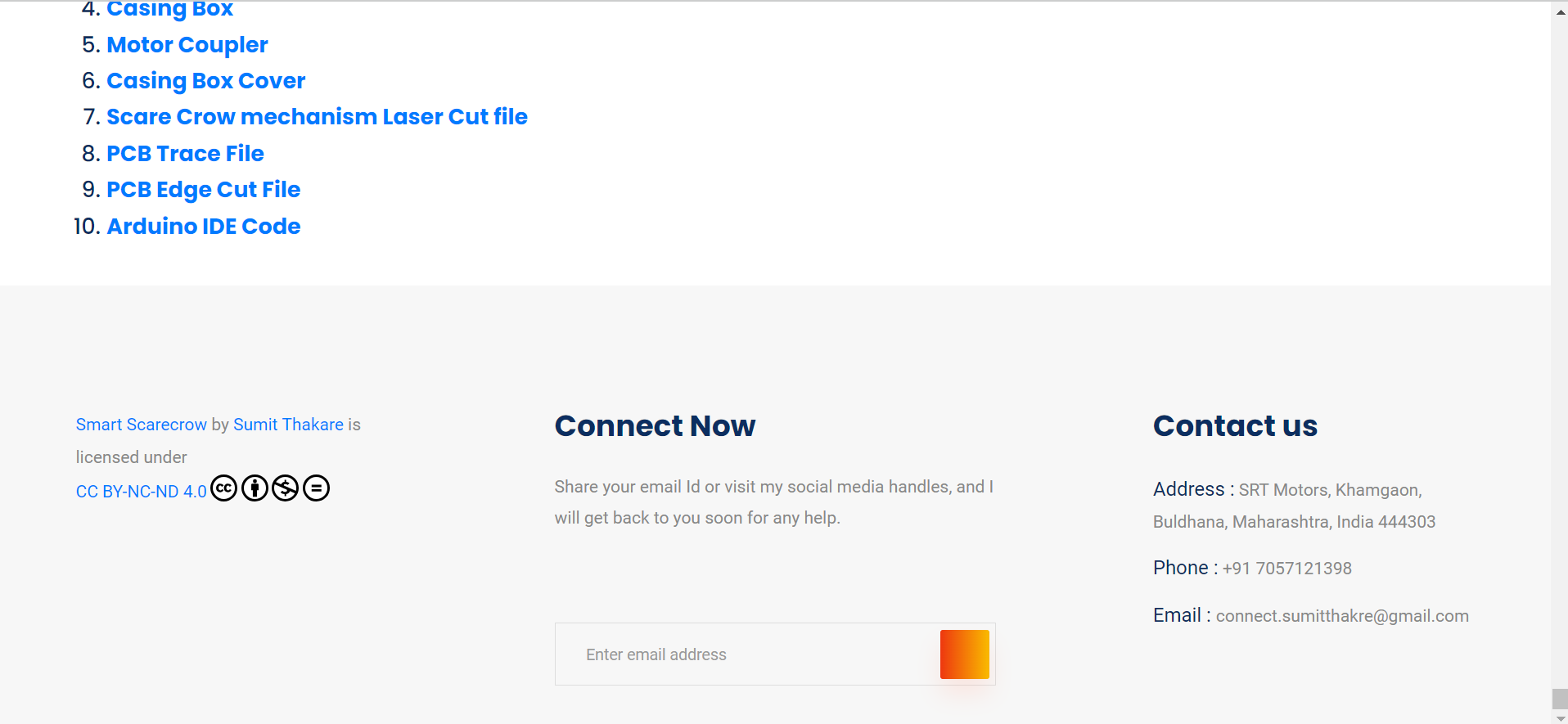Week 17
Invention, Intellectual Property, and Income
Brief Overview
I believe that my invention, a smart scarecrow, will truly thrive in society once it reaches a stage where it begins to make significant contributions. As I near the completion of my final project, I am investigating various methods to transform it into a practical product that can benifit Farmers. At the same time, I am exploring ways and means to protect my project from infringements.
Through this assignment, I have learned about the nature of invention, the different types of intellectual properties, and the importance of protecting innovative ideas. I have also documented my learning outcomes to ensure a comprehensive understanding of these concepts.
Individual Assignment:-
In this assignment:-
Develop a plan for dissemination of your final project.
- Prepare drafts of your summary slide (presentation.png, 1920x1080) and - Video clip (presentation.mp4, 1080p HTML5, < ~minute, < ~10 MB).
What is an Invention?
An invention is a distinctive or innovative device, method, composition, or process. The process of inventing is a part of the broader engineering and product development process. An invention can enhance a machine or product or introduce a new method for creating something or achieving a result. A groundbreaking invention achieves a completely unique function or result, representing a significant breakthrough. Such creations are new and not obvious to others in the same field, and an inventor might be making a significant leap towards either success or failure.
Types of Inventions
Inventions are categorized into three types: scientific-technological (including medicine), sociopolitical (including economics and law), and humanistic, or cultural. Scientific-technological inventions include railroads, aviation, vaccination, hybridization, antibiotics, astronautics, holography, the atomic bomb, computing, the Internet, and the smartphone.
Sociopolitical inventions include new laws, institutions, and procedures that alter social behavior and create new forms of human interaction and organization. Examples include the British Parliament, the US Constitution, the Manchester (UK) General Union of Trades, the Boy Scouts, the Red Cross, the Olympic Games, the United Nations, the European Union, and the Universal Declaration of Human Rights, as well as movements such as socialism, Zionism, suffragism, feminism, and animal-rights veganism.
Humanistic inventions encompass the entirety of culture and are as transformative and vital as any scientific advancement, though often taken for granted. In linguistics, for example, many alphabets have been invented, as are all neologisms (Shakespeare invented around 1,700 words).
What is Intellectual Property (IP)?
Intellectual property (IP) refers to creations of the human mind, including inventions, literary and artistic works, designs, symbols, names, and images used in commerce. Different countries recognize various types of intellectual property, with the most well-known being copyrights, patents, trademarks, and trade secrets. The modern concept of intellectual property emerged in England during the 17th and 18th centuries, with the term "intellectual property" becoming common in the late 20th century.
The primary goal of intellectual property law is to foster the creation of a diverse range of intellectual goods by granting creators and businesses property rights over their creations for a limited time. This provides economic incentives for innovation by allowing creators to benefit from and protect their work. These incentives are expected to drive technological progress, influenced by the extent of protection offered to innovators.
Types of Intellectual Property Rights
Intellectual property rights encompass patents, copyrights, industrial design rights, trademarks, plant variety rights, trade dress, geographical indications, and, in some jurisdictions, trade secrets.
Patents: A patent is a government-granted right that gives an inventor the exclusive right to make, use, sell, and import an invention for a limited period, in exchange for public disclosure of the invention. An invention must be new, non-obvious, and industrially applicable. Patent owners must disclose valuable information about their inventions to stimulate further innovation.
Copyright: Copyright grants the creator of an original work exclusive rights to its use and distribution, usually for a limited time. Copyright covers various forms of creative, intellectual, or artistic works but does not protect ideas themselves, only their expression.
Industrial Design Rights: Industrial design rights protect the visual design of objects that are not purely utilitarian. These designs can include shapes, configurations, patterns, and colors, contributing to a product's aesthetic appeal and commercial value.
Trademarks: A trademark is a recognizable sign, design, or expression that distinguishes products or services of one trader from those of others.
Plant Variety Rights: These rights give breeders the exclusive control over new plant varieties they develop, provided these varieties are novel and distinct.
Trade Dress: Trade dress refers to the visual and aesthetic appearance of a product or its packaging that signifies the product's source to consumers.
Trade Secrets: A trade secret is confidential business information that provides a competitive edge. Unlike other intellectual property, trade secrets are not formally protected by the government; businesses must safeguard their secrets themselves (e.g., Coca-Cola's formula).
Different Copyright Licenses
All Rights Reserved: Copyright is automatically granted upon the creation of an original work. While not necessary, using a copyright symbol or registering your work can provide public notice and strengthen your legal position in a dispute. In the United States, you must register with the Copyright Office to take legal action for infringement. Different rules apply outside the United States.
Some Rights Reserved: Creators may choose to release some of their copyright rights while retaining others, often specifying a particular license under which their work is distributed.
GNU General Public License (GPL): This free software license ensures end users the freedom to run, study, share, and modify the software. Originally written by Richard Stallman for the GNU Project, it promotes software freedom.
Creative Commons (CC): Creative Commons is a nonprofit organization that provides free legal tools to share and use creative works under specified conditions. Their licenses offer a standardized way to give the public permission to share and use your work.
Dissemination Plan for Smart Scarecrow
Who is my project for
My final project Smart Scarecrow is for farmer to protect their cropfield from wildlife interventions.
How is it funded
My final project is currently not being funded apart from what we have spent on developing the same. However, our organisation Vigyan Ashram is supporting me for the input cost required for material, consumable and R&D purpose.
Business plan and funding for scaling up
Yes, I am currently working on drafting a business plan for developing this project as a commercial product. I had alreadty Installed and provided some We will be doing more and more field trials, so make a sturdy system, and improve the model. As of now we do not have any potential funder, but after trail and customer feedback we will submit proposal to funding agency.
License chosen or something else to protect intellectual properties of my project
Yes, I have chosen license from Creative Commons. Details of, which are given below in this assignment itself.
How will I raise awareness of my project amongst the target group
Vigyan Ashram is a Rural Innovation Hub, so daily many visitor, framer, industry person, innovator keep visiting, so I will place a model near entrace so visitor can enjoy it and give reference to farmer and implement at there fields
Also in 2023 when I have published a lesson plan on Scopes DF, so I received the First Prize, the news where published in Local Media channel, so we got many enquiries. Though our model was under R&D we did not sell the product.
Future Possibilities for my Final project
As I have already mentioned, my final project is designed for farmer to protect their crop from WildLife interventions. So we are working to make it more economical, and affordable for farmers.
Creating license on Creative Common for Final project
I started with going to creativecommons.org

Here you will find options to share your work as seen in the image below. Click on 'Get Started' button.

Now next part is to select options as shown in the images below and keep clicking next. Click "No, I need help selecting a license."

Next, click "Yes. Anyone using my work must include proper attribution." and click 'Next' as shown below.

Next, click "No. Others can not use my work for commercial purposes." and click 'Next' as shown below.

Next, click "No. Others may only use my work in unadapted form." and click 'Next' as shown below.

Next, check all the boxes and click 'Next' as shown.

Add all the details like 'Title of Work', 'Creator of Work', etc., and click 'Done' as shown.

You are almost done. Copy license details as a 'Rich text' as shown.

Alternatively, copy license details as a 'HTML' format as shown.

I used this HTML format and added to the footer of my final project page as shown below.

Once you edit the code it will be displayed on the webpage


I added this Plain text format of my license just below the project title on final slide as shown below.
Project Slide
